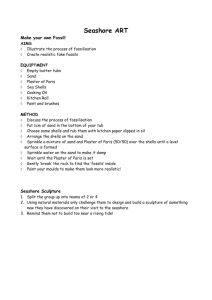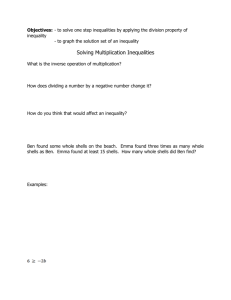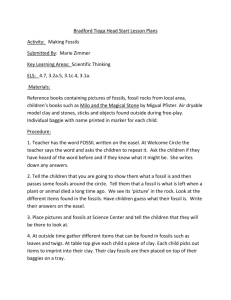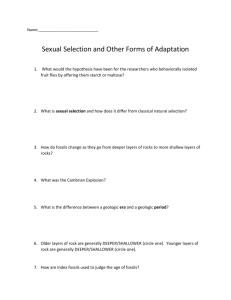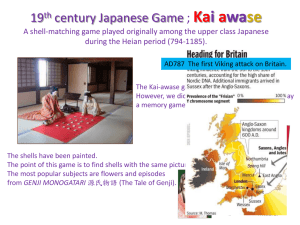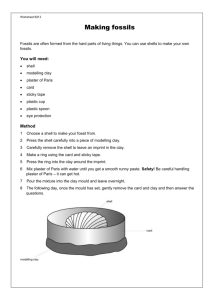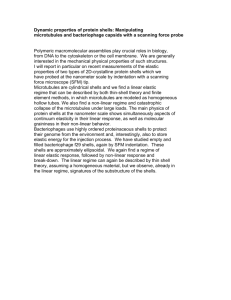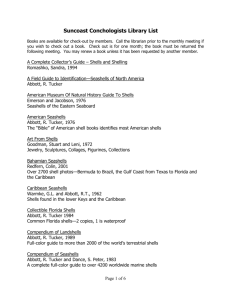earthsciencees10fossils
advertisement
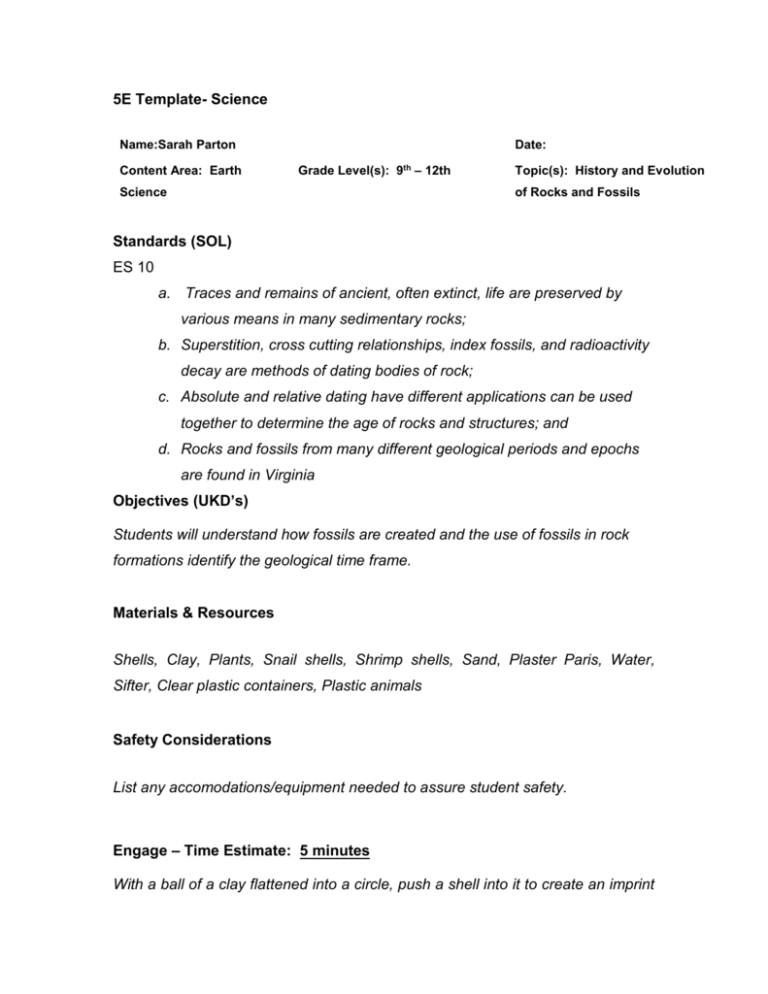
5E Template- Science Name:Sarah Parton Content Area: Earth Date: Grade Level(s): 9th – 12th Science Topic(s): History and Evolution of Rocks and Fossils Standards (SOL) ES 10 a. Traces and remains of ancient, often extinct, life are preserved by various means in many sedimentary rocks; b. Superstition, cross cutting relationships, index fossils, and radioactivity decay are methods of dating bodies of rock; c. Absolute and relative dating have different applications can be used together to determine the age of rocks and structures; and d. Rocks and fossils from many different geological periods and epochs are found in Virginia Objectives (UKD’s) Students will understand how fossils are created and the use of fossils in rock formations identify the geological time frame. Materials & Resources Shells, Clay, Plants, Snail shells, Shrimp shells, Sand, Plaster Paris, Water, Sifter, Clear plastic containers, Plastic animals Safety Considerations List any accomodations/equipment needed to assure student safety. Engage – Time Estimate: 5 minutes With a ball of a clay flattened into a circle, push a shell into it to create an imprint of the shell. Discuss with the students how the shell created lines the imprint in the clay. Do not discuss anything else at this point. Explore – Time Estimate: 10 minutes Have students pair up, and give each group of students a piece of clay. Explain to them they are to take a couple of different shells or plants or both and use them with the clay. Students are to explore what the impression does; furthermore, see if they connect it to fossils. Explain -- Time Estimate: 15 minutes Question students about what the clay did when it formed around the different shells. Talk about fossils being vertebrates (shells) and invertebrates (plants). Extend -- Time Estimate: 45 minutes Students will now be grouped in fours to take the first experiment one step further. They will be given the materials to create fossils as if they were in the ocean billions of years ago. They will follow these steps: 1. 2. 3. 4. 5. Mix sand and plaster of paris into a plastic container Place shells into mix in different areas of the container Add water to emulate the ocean Add more sifted sand/plaster of paris mixture Use a small plastic animal to create foot prints in the mixture as it dries. a. Snakes b. Turtles c. Alligators Allow plenty of time for the containers to completely harden. At least 24 hours for mixture to set up completely. Evaluate -- Time Estimate: 15 minutes Students will answer questions about their experiments. 1. What happened to the shells as they were covered by the mixture? 2. What kind of imprints would be made? Would there be an imprint in both directions or only one? 3. What would have happened to the animals that were in the shells? 4. How long would it take for the sediment to fill up over the shells? 5. What is the significance of the animals walking on the mud mixture after the sediment has been filled in around the shells? Plans for Diversity Slow Readers: Assign a group leader by ability, and state the group leader is to read the directions as the other students read along. Special Needs Students: Dysgraphia: Teacher created lab sheets sectioned off in areas so the student can visually see what space he/she has to write in. Visually Impaired Students: The teacher will provide lab worksheets blown up for them to be able to read it. Hearing Impaired Students: The teacher will provide a quiet place for the student where there is no background noise to distract or impair the student’s understanding. ADHD Students: The teacher will provide them with a lot of opportunities for hands on. They will be responsible for going and getting materials as well as helping to put them away. Furthermore, they will be given extra time not to exceed 15 minutes in class to write their findings of the experiment. LD Students: The teacher will allow extended time for them to perform and write about their findings of the experiment. The students will not receive any longer than 1 class plus 30 minutes of another class to complete the assignment. ID Students: The teacher will guide the students in their experiment from the beginning until the end or the teacher may pair an ID student with a student who has a stronger background in science. Connections The experiment will allow for students to create and discover how sediment formed around the animals after they died and fell to the bottom of the ocean. They will be able to discover how the animals shells over time became fossils, and how scientists today are able to figure out if the animal was a vertebrate or an invertebrate.
